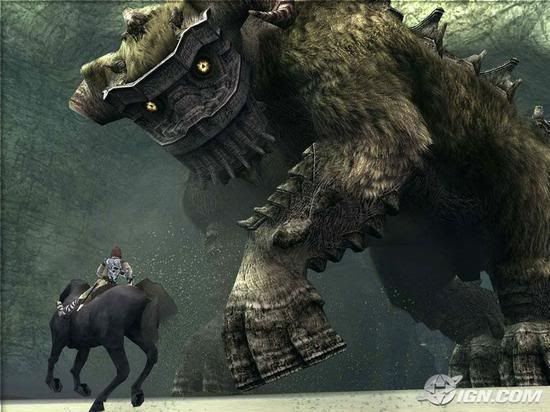
Now we come to a set of comments that I think have more to do with the claims I was trying to make in the original post:
4. The matter of choice vs. interactivity.
The reason I think these comments start to get to the heart of the matter of the kind of profundity I was talking about is that I think that profundity arises specifically in relation to interactivity and player choice. I argued that the removal (or the simple absence) of player choice, when it stands in a meaningful relationship to the action and themes of the story being told, is capable of producing an artistically gratifying depth of meaning. The two examples I gave were the handling of the necessity of killing Andrew Ryan in Bioshock and the necessity of getting your warthog (jeep) to end of the level “The Maw” in Halo.
I may at some point decide to get into the literary, philosopical, anthropological, sociological, and psychological problem of “artistically gratifying depth of meaning” in this blog, but this isn’t the moment to do that. For now, it’s a way to unpack (slightly) the word “profundity,” which I said a couple posts ago probably needs to be put down to taste. To repeat a bit, two things I’m definitely not saying are 1) that Halo and Bioshock are more profund than any other work, whether a game or an epic or something else; or 2) that the specific effect of profundity I’m identifying is the only, or even the best, way for games (or anything else) to bring about an artistically gratifying depth of meaning.
Two commenters to the original post, Grey and J1M, had a very interesting debate about what the most important affordance of games for narrative actually is. (Sorry about the word “affordance,” but once you start using it you’ll find that you’ve needed it in your vocabulary your whole life.) J1M maintained that it’s player choice, giving the examples of Fallout and Deus Ex, where player choices can affect the course of the story to a very great degree. Grey maintained that it’s interactivity, giving the example of Shadow of the Colossus, where the player’s relationship with the horse Agro is created by the player’s actual physical interaction with the game in controlling Agro. J1M countered that interactivity has in the end really no more potential than the infamous “fart button” in Fable. Grey countered that real player choice denies the game-developer the authorial control that alone can create profundity.
(That last bit from Grey will lead me on in the next post to talk about the identity of the artist, so I’m going to bracket that aspect of the question for the moment.)
Here’s my take, partly from ancient epic and partly from game-play. If interactivity can in fact be defined the way I defined it in the last post, as “permitting a person to participate in, through a measure of control over, the relevant experience,” choice is simply that kind of interactivity that has a decisive effect on the course of the story. That is, at one end of the spectrum you have the fart button; at the other end you have the multiple endings of Fallout (and, to a lesser degree [perhaps much lesser]) Mass Effect and Star Wars: Knights of the Old Republic.
The question of meaning arises over the functioning of such interactivity in relation to the rest of the story. The fart button’s only meaning (as far as I can tell) is that the hero of Fable is real enough to be flatulent. I wouldn’t call that profound, but YMMV. The player’s relationship to Agro in Shadow of the Colossus is IMHO much more meaningful. The meaning of the choices in Fallout is perhaps no greater, but certainly very different. All those meanings arise out of interactivity.
All those effects of profundity seem to me to have strong and interesting analogues in the practice of ancient epic. The fart button is like the kind of running joke one finds in Homer (for instance the extreme old-age of Nestor), which the bard could either bring in or leave out; the relationship to Agro is like the bard’s relationship to Patroclus, Achilles’ best friend (who like only two other characters, and for reasons that we still can’t agree upon, is addressed in the second person from time to time); the real, story-making choices are like such game-changing Homeric elements as the Shield of Achilles, which must originally have been the work of one bard with a yen to shake things up.
My only point in relation to the preceding, with respect to Halo and Bioshock, is that the meaning I identified in them can be added to the list. All these profundity effects have a place, I think, in games; their use in individual games will only get more refined (even the fart button) as the medium develops.
Back next time with “Who’s the real artist? Is there a real artist? Does it really matter?” Thanks for reading.
